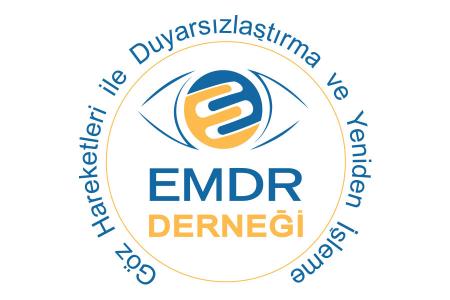About EMDR
Francine Shapiro, PhD, an American psychologist, developed Eye Movement Desensitization and Reprocessing (EMDR) Therapy as a breakthrough therapy with special capacity to overcome the often devastating effects of psychological trauma in the late 1980s. An ever-growing community of therapists soon saw directly its power to transform lives. At the same time, controlled research studies consistently demonstrated its efficacy and effectiveness. For many therapists who took up this therapy, EMDR felt like a “gift” to themselves and their clients, and they were eager to “pay it forward” by spreading the word to colleagues.
Initially, EMDR was utilized and studied as a therapy for PTSD (post-traumatic stress disorder) which was itself a relatively new diagnosis for an age-old human affliction. More than 20 controlled clinical trials of EMDR therapy have now been completed and reported, attesting to its value and demonstrating its usefulness across all ages, genders, and cultures for post-traumatic stress disorders. Tens of thousands of clinicians have been trained in EMDR therapy and have applied the defining protocols of this psychotherapy to many other conditions, including personality disorders, eating disorders, panic attacks, performance anxiety, complicated grief, stress reduction, dissociative disorders, disturbing memories, addictions, phobias, pain disorders, sexual and/or physical abuse and body dismorphic disorders.
EMDR therapy is a cost-effective, non-invasive, evidence-based method of psychotherapy that facilitates adaptive information processing. EMDR therapy is an eight-phase treatment which comprehensively identifies and addresses experiences that have overwhelmed the brain’s natural resilience or coping capacity, and have thereby generated traumatic symptoms and/or harmful coping strategies. Through EMDR therapy, patients are able to reprocess traumatic information until it is no longer psychologically disruptive.
During this procedure, patients tend to “process” the memory in a way that leads to a peaceful resolution. This often results in increased insight regarding both previously disturbing events and long held negative thoughts about the self. For example, an assault victim may come to realize that he was not to blame for what happened, that the event is really over, and, as a result he can regain a general sense of safety in his world.
Since the development of EMDR therapy, many adaptations of the therapy have been established to address particular types of psychological problems, but all specialized applications rest on EMDR’s basic protocols and concept of adaptive information processing.
Adaptive Information Processing — the Guiding Principle of EMDR Theory
The Adaptive Information Processing (AIP) Model has been constructed from observations of many people in states of psychological health and dysfunction. The model reveals that health is supported by positive and successful experiences that increasingly prepare a person to handle new challenges and that the brain is equipped to manage and process adversity.
Yet, there are negative life experiences that can elude a person’s natural processing abilities. Another way to look at this is to consider a splinter lodged in one’s hand. This foreign object can cause pain and infection. Once removed, the body naturally knows how to heal. Depending on the nature of the trauma, the strengths and developmental stages of the person impacted, and the support available at the time of the traumatic event, some experiences cannot be easily moved or recovered from. This can go on to drive psychological symptoms. Once processed or removed like the splinter, the natural process of healing from adversity can take place. The AIP model guides a clinician’s use of EMDR procedures so that the person’s own brain can complete the processing of difficult memories. This results in the reduction of suffering and symptoms and the development of new coping skills that can support psychological health.
Description of an EMDR Therapy Session
Eye Movement Desensitization and Reprocessing (EMDR) is an approach to psychotherapy that has been practiced in the U.S. and around the world for the past 25 years. It integrates many of the successful elements of a range of therapeutic approaches, yet there are aspects of EMDR that are unique. In particular, the therapist leads a patient in a series of lateral eye movements while the patient simultaneously focuses on various aspects of a disturbing memory.
The left – right eye movements in EMDR therapy are a form of “bilateral stimulation”. Other forms of bilateral stimulation used by EMDR therapists include alternating bilateral sound using headphones and alternating tactile simulation using a handheld device that vibrates or taps to the back of the patient’s hands.
EMDR therapy is applicable for a wide range of psychological problems that result from overwhelming life experiences. During the processing of difficult memories, a person who has been abandoned by a spouse may come to realize that she is loveable and is no longer overwhelmed by negative feelings about herself or participate in unproductive behaviors stemming from those feelings. A person fearful of driving due to a terrible car accident in the past may end the session feeling safe to drive again.
The therapeutic effects of bilateral stimulation were discovered by Francine Shapiro, Ph.D., who grasped their power in psychotherapy. Dr. Shapiro found -quite by accident- that emotional and behavioral symptoms resulting from disturbing experiences tend to resolve naturally when a person allows him/herself to recall various elements of a memory while engaging in bilateral stimulation such as lateral eye movements. Dr. Shapiro and her associates developed a number of procedures for coordinating this “dual awareness”. The procedures have been refined and validated through controlled research at several centers around the world. Precise and careful use of these procedures can lead to a safe processing of memories, such that the negative thoughts and emotions disappear.
More than a set of “techniques”, the EMDR approach provides a model for understanding human potential, including how positive experiences support adaptive living, or psychological health, and how upsetting experiences can sometimes lead to psychological problems that interfere with a person’s ability to meet life challenges. The EMDR protocol guides clinicians in careful assessment and preparation work, particularly for persons with histories of multiple traumas.
EMDR procedures should only be used by a fully trained EMDR clinician, who holds licensure in the mental health field.
“EMDR is one of the most powerful tools I’ve encountered for treating post-traumatic stress. In the hands of a competent and compassionate therapist, it gives people the means to heal themselves.”
Steven Silver, Ph.D.
Director of the PTSD Unit, Veterans Admin. Medical Center, Coatesville, Penn
There is no definitive explanation as to how EMDR may work. There is some empirical support for each of three different explanations regarding how an external stimulus such as eye movement could facilitate the processing of traumatic memories.
Releated Content:
Institute for Behavioral Studies, Trauma Center is founded for providing counseling services to those experiencing trauma and to reduce the negative effects on ...
EMDR 1 (Eye Movement Desensitization and Reprocessing) EMDR 2 (Eye Movement Desensitization and Reprocessing) for more information Ergün...
Purpose of EMDR-TR is to set the standards on clinical applications of EMDR Therapy in Turkey also to execute training programs for proffesionals. In addition ...
Please refer below for more information on our Training Programs. If you have any questions please contact us from here. Trauma Training ...






